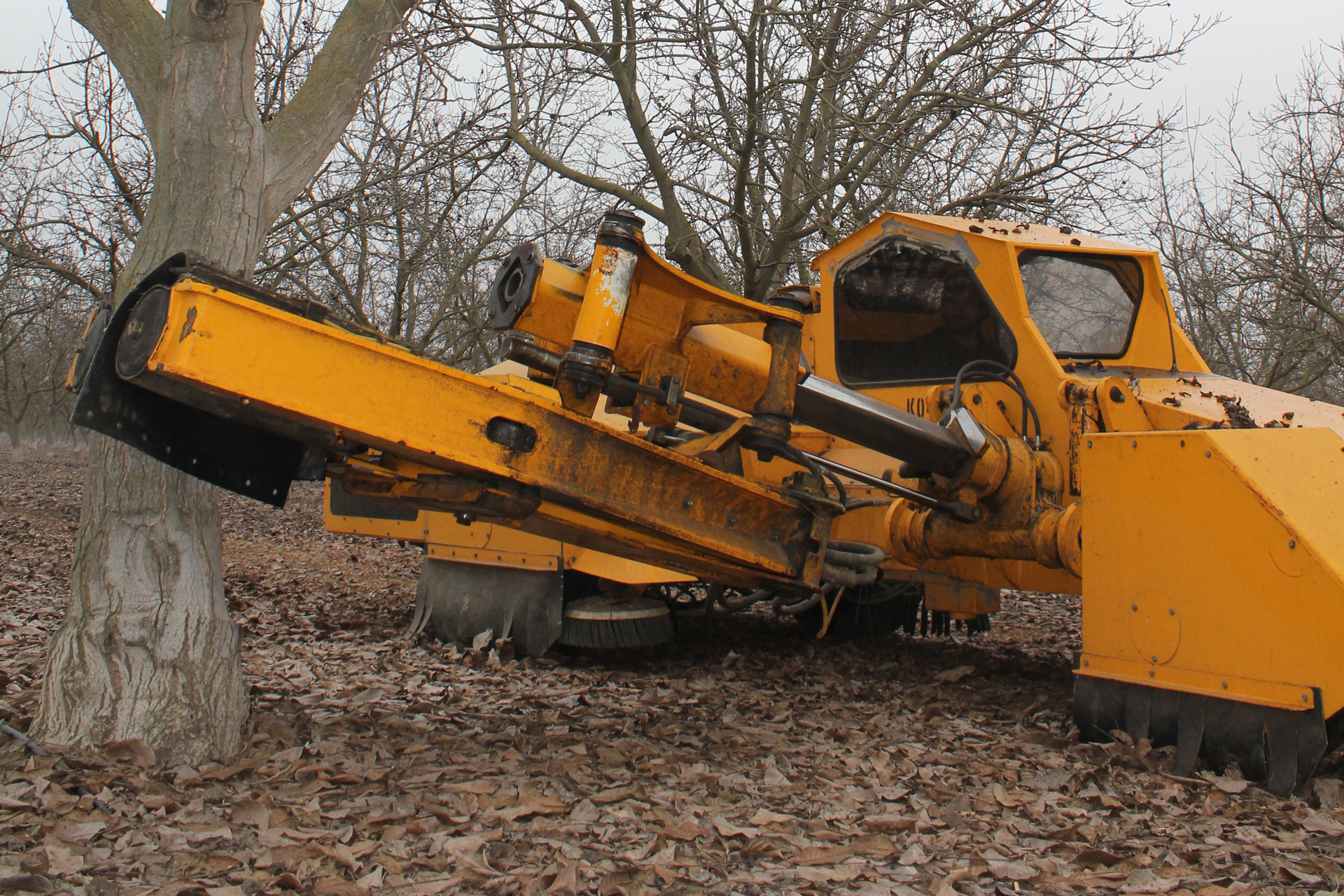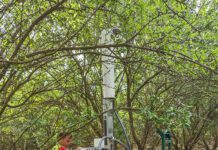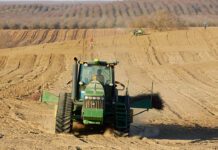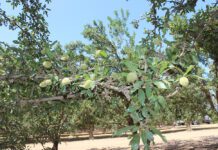
Worst case scenario for navel orangeworm damage in walnuts is a mature block of a susceptible variety next to a block of pistachio or almond trees where no sanitation is performed.
Given the attention most tree nut growers place on sanitation, that entire scenario is not likely, but it is an alert to walnut growers that NOW is a threat to their crop quality.
Jhalendra Rijal, UCCE area integrated pest management advisor in Stanislaus County, said that blighted nuts or codling moth open the door for NOW damage in walnuts. In the last few years, he said he has seen more blighted nuts in walnut orchards as a potential source for first generation NOW.
NOW can infest codling moth-infested nuts, blighted nuts, sunburned nuts and mummy nuts in walnut orchards. Once inside the hull via previous damage or hull split, larvae access the stem end of the nut, where they enter through the softer tissue and feed on the kernel.
Walnut orchards tend to have fewer mummy nuts than almond or pistachio orchards following harvest and into winter, but orchard sanitation is the best cultural practices to reduce navel orangeworm damage by keeping the orchard population low.
History of the orchard is another risk factor. Rijal said if NOW damage was found in last year’s crop, it is likely that NOW will be back this year. Monitoring and tracking population levels is an important component in NOW management. It is important to track flights in order to perform timely and more effective insecticide treatments, Rijal said.
The challenge with insecticide treatments, other than timing, is to have good coverage of husks to the top of the canopy. Proper calibration of spray equipment, the right rate of application, and slow ground speed can help make the most of this investment.
Serr and Vina are two varieties that have been found to be more susceptible to NOW damage compared to Chandler or Tulare. These also tend to be older, larger trees that make good coverage by insecticide more difficult.
Growers should think of NOW management in walnut as a comprehensive approach and consider mating disruption when necessary. It works best when used in the spring before NOW flight begins and should last through the season. This technique helps to reduce NOW populations in the orchard gradually, and provides more consistent and sustainable control over time.
Earliest possible harvest is another way to mitigate NOW damage. Ethepon application is a tool that can help with early harvest and it can also be used to synchronize harvest, setting up a schedule so trees are shaken in order of maturity. It is critical to follow guidelines in finding out when and how ethephon should use as the stage of the nut development needs to meet certain criteria for effective harvest.
For more information on ethepon: http://www2.ipm.ucanr.edu/agriculture/walnut/Using-Ethephon/













